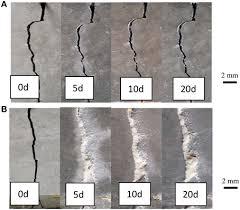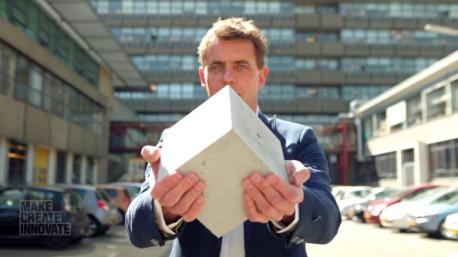Results: Self-healing concrete
Published on 08/29/2016
QUESTIONS
GO to COMMENTS
Comments
1.
1.
(Source: CNN) No matter how carefully it is mixed or reinforced, all concrete eventually cracks, and under some conditions, those cracks can lead to collapse. The problem with cracks in concrete is leakage. If you have cracks, water comes through -- in your basements, in a parking garage. Secondly, if this water gets to the steel reinforcements -- in concrete we have all these steel rebars -- if they corrode, the structure collapses. Now bioconcrete, that's concrete that heals itself using bacteria, solves this problem. The bioconcrete is mixed just like regular concrete, but with an extra ingredient - the "healing agent." It remains intact during mixing, only dissolving and becoming active if the concrete cracks and water gets in. Did you ever have issues with cracks at home?
Yes
39%
788 votes
No
37%
750 votes
Undecided
7%
152 votes
Not Applicable
17%
348 votes
2.
2.
Jonkers, a microbiologist, began working on it in 2006, when a concrete technologist asked him if it would be possible to use bacteria to make self-healing concrete. It took Jonkers three years to crack the problem - but there were some tricky challenges to overcome. "You need bacteria that can survive the harsh environment of concrete," says Jonkers. "It's a rock-like, stone-like material, very dry." Concrete is extremely alkaline and the "healing" bacteria must wait dormant for years before being activated by water. Jonkers chose bacillus bacteria for the job, because they thrive in alkaline conditions and produce spores that can survive for decades without food or oxygen. Did you know about bioconcrete before this survey?

Yes
7%
138 votes
No
73%
1496 votes
Undecided
5%
104 votes
Not Applicable
15%
300 votes
3.
3.
"The next challenge was not only to have the bacteria active in concrete, but also to make them produce repair material for the concrete -- and that is limestone," Jonkers explains. In order to produce limestone, the bacilli need a food source. Sugar was one option, but adding sugar to the mix would create soft, weak, concrete. In the end, Jonkers chose calcium lactate, setting the bacteria and calcium lactate into capsules made from biodegradable plastic and adding the capsules to the wet concrete mix. When cracks eventually begin to form in the concrete, water enters and open the capsules. The bacteria then germinate, multiply and feed on the lactate, and in doing so they combine the calcium with carbonate ions to form calcite, or limestone, which closes up the cracks. Would you like to try this concrete?
Yes
37%
753 votes
No
13%
270 votes
Undecided
29%
582 votes
Not Applicable
21%
433 votes
4.
4.
Now Jonkers hopes his concrete could be the start of a new age of biological buildings. "It is combining nature with construction materials," he says. "Nature is supplying us a lot of functionality for free - in this case, limestone-producing bacteria. If we can implement it in materials, we can really benefit from it, so I think it's a really nice example of tying nature and the built environments together in one new concept." He is also working in a liquid form to apply to regular concrete so bacteria can get into the cracks and fill them. Do you think this product will offer a more affordable and long lasting way of fixing cracks?

Yes
39%
793 votes
No
10%
196 votes
Undecided
34%
686 votes
Not Applicable
18%
363 votes
COMMENTS

